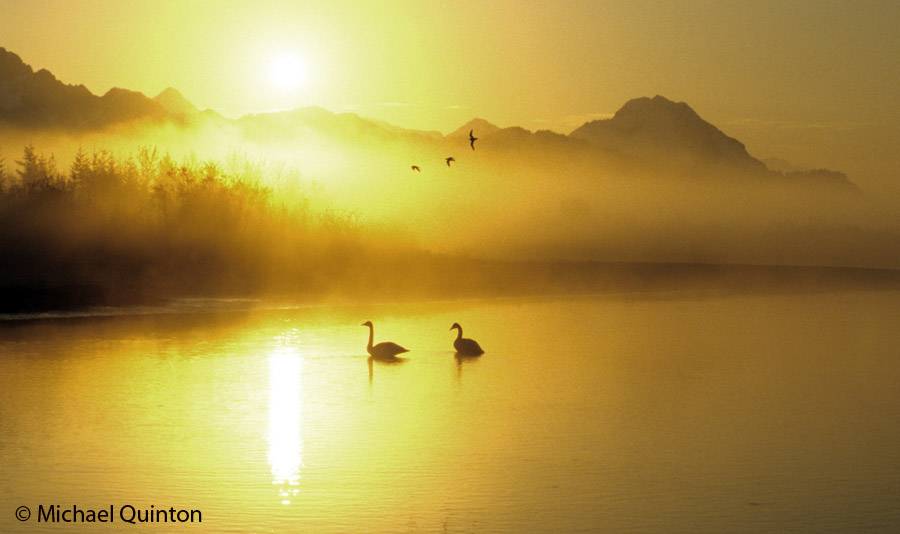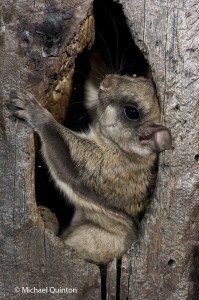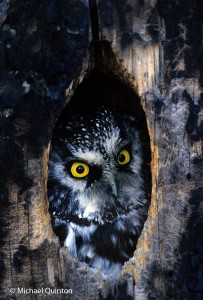I’d been on their track for a mile or two. It had taken nearly two hours to get this far moving slowly through the forest on snowshoes. The thick and stunted boreal forest was mostly black spruce. Small stands of tall aspen and veins of thick and lofty white spruce stood where the nutrient poor soil drained enough to prevent permafrost. The understory consisted of numerous species of willow along with Labrador tea and blueberry. Tracks and trails of snowshoe hares were everywhere. The snowshoe hare population undergoes huge swings in numbers during their ten-year cycle. Likewise, other prey species such as spruce grouse were on the upswing driven by years of low predator numbers. The hare population had peaked. And with the increasing snowshoe and grouse population, lynx, coyotes, red fox, northern goshawks and great horned owls, and even the smaller northern hawk owl populations were once again on the rebound. Continue reading
Author Archives: admin
IMAGINATION PLAYGROUND
Information is a key ingredient of every successful photograph. But when a photograph says too much its meaning and effectiveness is in danger of being lost. There are times when less is definitely more. Continue reading
CURSE OF THE WIDE-ANGLE
 Spectacular Wrangell Mountains in Alaska seem insignificant in this ineffective wide-angle photograph.
Spectacular Wrangell Mountains in Alaska seem insignificant in this ineffective wide-angle photograph.
I remember my own fascination with the wide-angle lens. My first was a 24mm. The wide view had great appeal to me. It was thrilling to look at the landscape thru my lens. I could fit entire mountain ranges onto my tiny Kodachrome slide! And there lies the problem. A wide-angle lens often includes too much information with detail that is too small.
We expect the camera to record what we see. But, the fact is, we humans see things quite differently than any camera. Humans see their subject subjectively. We concentrate on our subject and don’t notice much else, missing details that we should be paying close attention to.
The camera records everything within the viewfinder, it sees objectively. Right down to all those distracting details we failed to notice.
In contrast, when we look at a mountain range or desert, we see the mountains, the terrain, we feel the wind, we get dust in our eye, we feel the cold or hot, We smell the pines or the sagebrush and the delicate fragrance of wildflowers as our gaze dances from flower to flower and bounce along with a foraging bumble bee.
PHOTOGRAPHING MOUNTAIN SHEEP
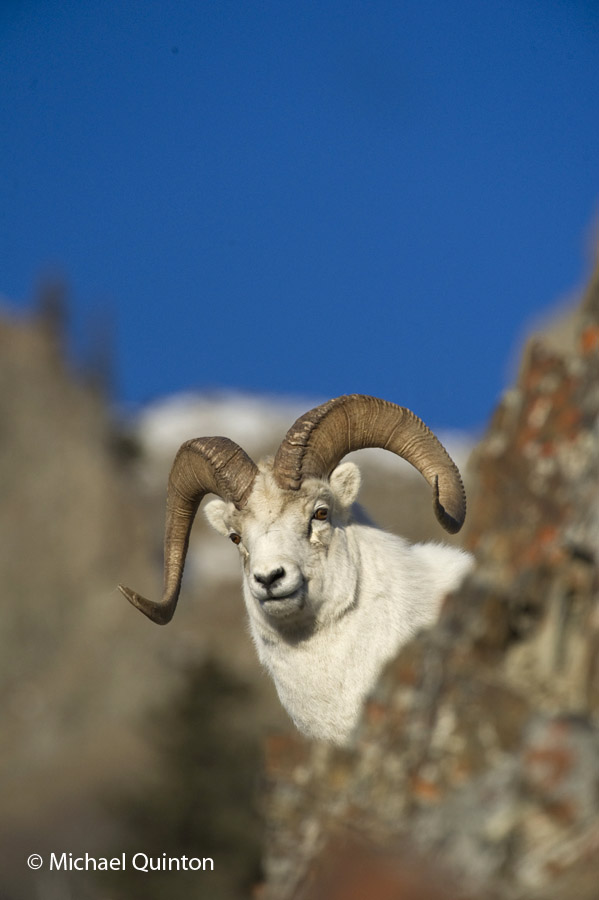 Dall ram checks out photographer.
Dall ram checks out photographer.
Walk softly and carry a big lens. All species of North American mountain sheep, the bighorns, Rocky Mountain bighorn and desert bighorn and the thinhorns, stone sheep and dall sheep are naturally skittish. Specific protocols are required when photographing wild sheep at close range. Ever on the lookout for predators, wild sheep are tuned into sounds of rocks tumbling down the mountainsides or moving across noisy scree slopes. Sudden movements or too much noise are likely to send mountain sheep stampeding towards the nearest cliffs. A telephoto lens is a must. The perspective a telephoto gives will separate your subject from the background. Continue reading
WHITE SHEEP, WILD MOUNTAIN
 Dall ram peeks over a windswept ridge.
Dall ram peeks over a windswept ridge.
Pursuing wild rams in the far north is an addiction of mine. Those who are afflicted with this particular disease willingly subject themselves to cold and wind, sweat and pain. Other symptoms include an insatiable desire to witness dramatic wildlife amid glorious wilderness settings. Continue reading
FLYING SQUIRRELS, THE INSIDE SCOOP
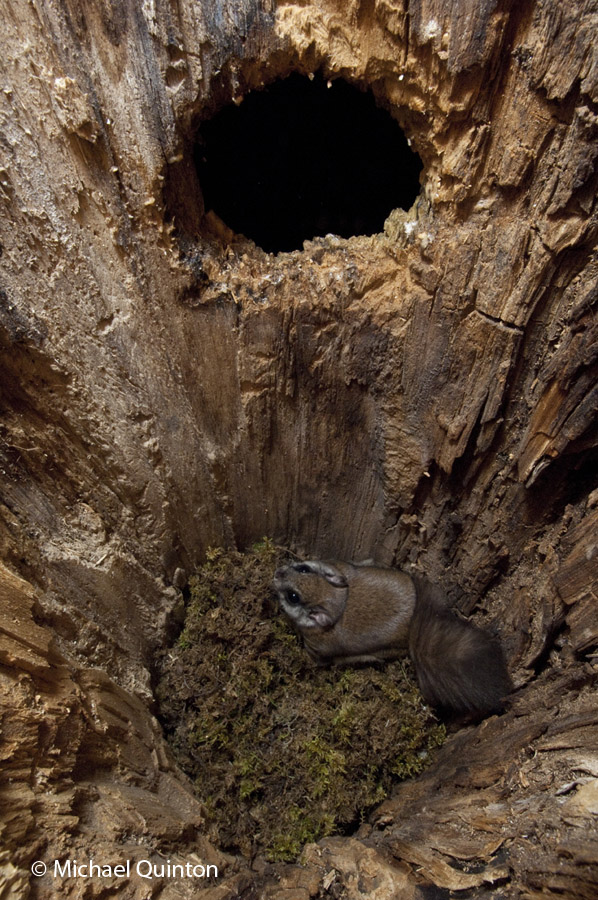 Northern flying squirrel inside its nest in an old flicker nesting cavity. Continue reading
Northern flying squirrel inside its nest in an old flicker nesting cavity. Continue reading
FLYING SQUIRREL AND BOREAL OWL
Northern flying squirrel and boreal owl at the entrance to the same old northern flicker nesting cavity. The flying squirrel taken with a Nikon D3s digital camera and boreal owl shot with a Nikon F3 on Fujichrome film were taken more than ten years apart. The images illustrate the importance of the northern flickers, a keystone species. The flickers nest building activity increases forest biodiversity. Photographs were taken near my home in Slana, Alaska.
ALASKAN FLYING SQUIRREL
 Alaskan flying squirrel peers out of an old northern flicker cavity just as darkness sets in.
Alaskan flying squirrel peers out of an old northern flicker cavity just as darkness sets in.
Northern flying squirrels are more common in Alaska than most realize. They are found in coastal rainforests as well as the boreal forests of the interior. Flying squirrels are nocturnal thus rarely seen. I began to see them as I photographed the nocturnal activities of a pair of nesting boreal owls. As it turns out, boreal owls and flying squirrels share the same habitat preferences. They seem to prefer the big white spruce stands that grows along streams and other places where permafrost is not close to the surface. They share these places with the red squirrel. Red squirrels are active during the day and flying squirrels are active at night. But in the far north where it does not get dark for a several weeks during the summer, their activities overlap. Flying squirrels nest in abandoned northern flicker nesting cavities or other natural hollows.
OCTOBER MIGRATION
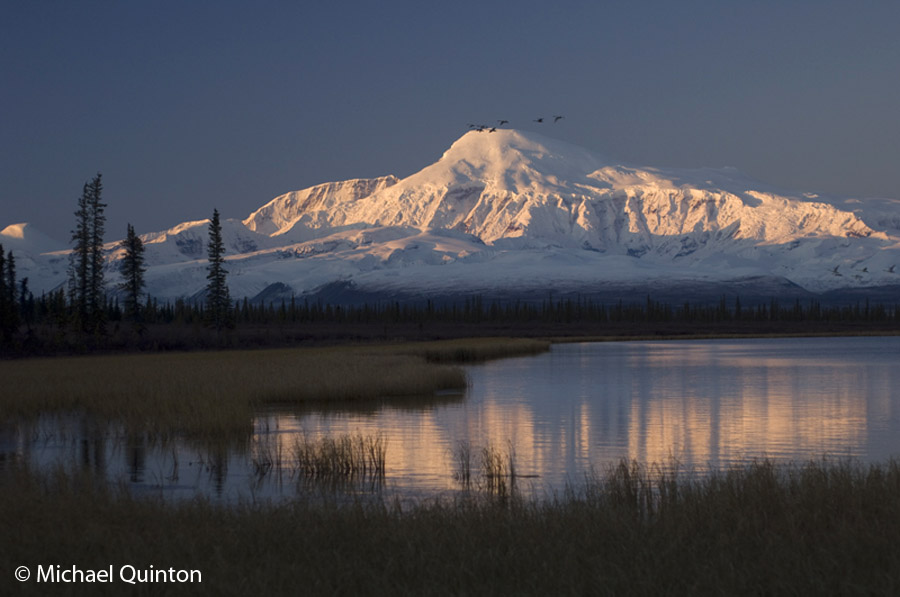 A family group of tundra swans flies over Wrangell/St. Elias National Park in early October.
A family group of tundra swans flies over Wrangell/St. Elias National Park in early October.
By mid October, open water becomes harder and harder to find and most waterfowl, ducks geese and swans, have already left Alaska. But the past two evenings, after dark, I heard migrating swans somewhere overhead. There were both tundra and trumpeter swans calling.
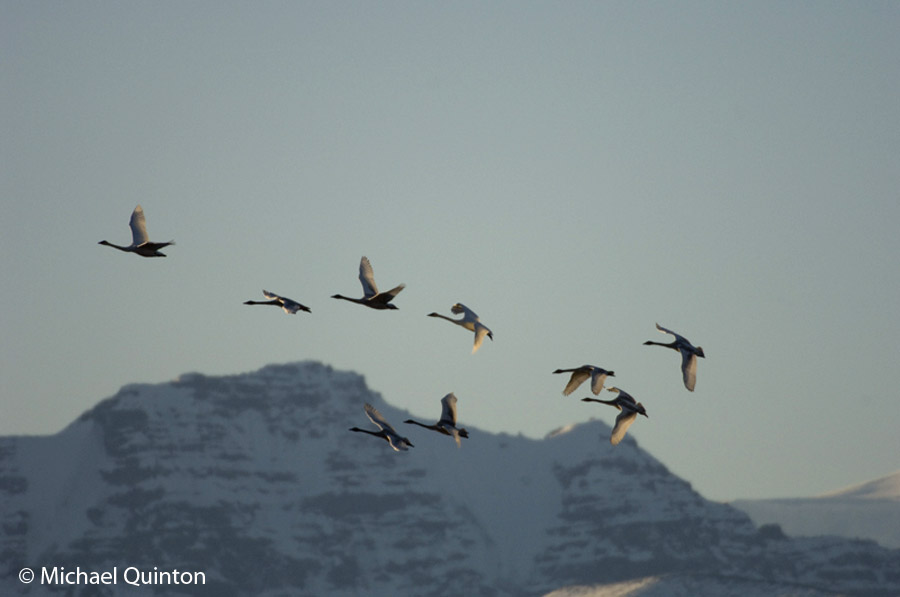 Tundra swans over the Wrangell Mountains. Continue reading
Tundra swans over the Wrangell Mountains. Continue reading
FALL CLOSE-UPS
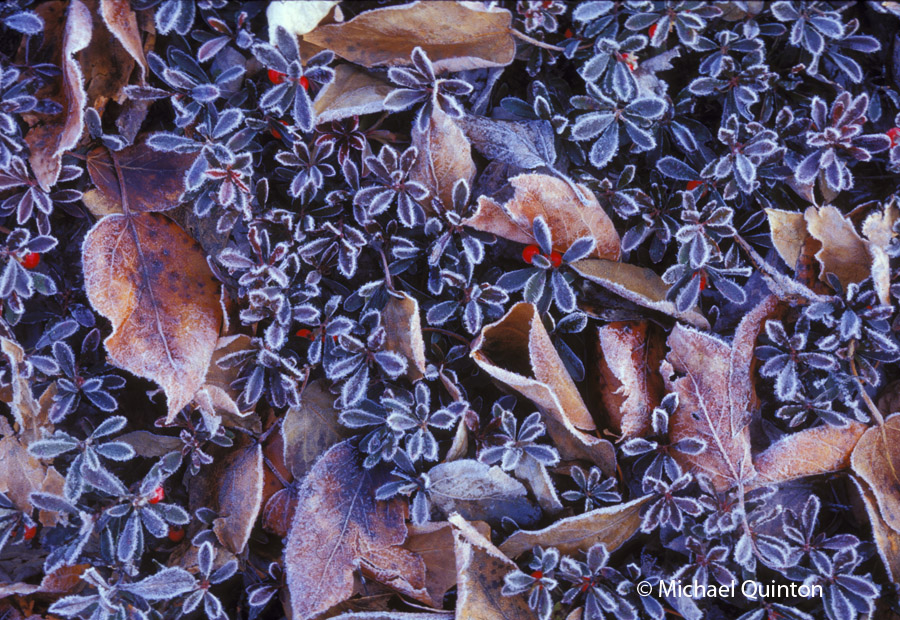 Frosty kinnickinnick and poplar leaves.
Frosty kinnickinnick and poplar leaves.
Fall colors are a favorite subject of photographers. But don’t forget to look down. That world beneath your feet is easily overlooked. Give forest understory pictures adequate depth of field by stopping down to F 16 or F 22. Focus on the most interesting details.
While my wife, Cindy and I picked high bush cranberries I noticed several beautiful, colorful and cryptic moths. Continue reading


